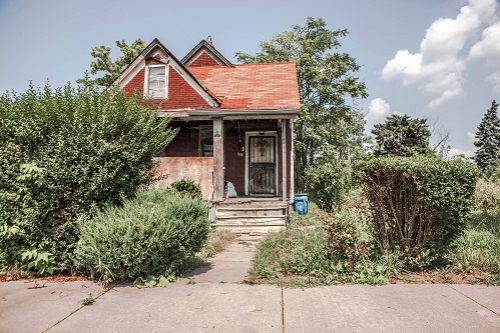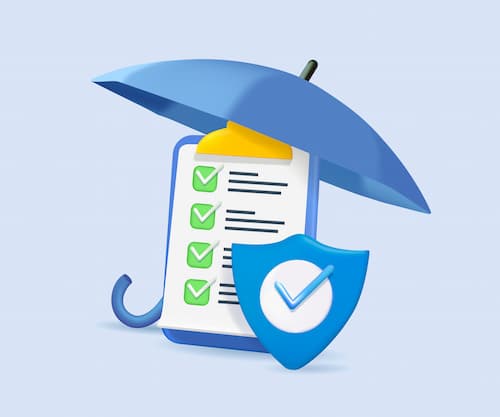How to buy homeowners insurance
Shopping for homeowners insurance is one of the most important things you can do as a homeowner. Buying home insurance requires just a few simple steps.
Decide how much coverage you need. Before you start shopping, you need to know how much dwelling coverage you need, which is a calculation of your home’s replacement cost. A calculator makes this easy, but the insurance company will also provide you with their own estimate. You’ll also need to decide on personal liability coverage limits and a deductible.
It's important that your replacement cost calculation be as accurate as possible. This is the amount your home insurance company will pay for your home and should be enough to rebuild it from the ground up at today's prices. Most of the other coverage limits on your homeowners insurance policy are a percentage of this number, including other structures and personal property coverage, which makes it even more important to get right.
Decide how you’d like to get quotes. Most major insurers offer a variety of quoting options. You can get quotes online directly from an insurance company, speak to an agent over the phone or in person, call the insurance company’s customer service line or get multiple quotes at once with an online quote comparison tool.
Have all of the details ready. Make sure you have the following handy when you request quotes:
Your home’s square footage and year built
Your personal information, including your social security number.
Estimated value of home contents or personal belongings.
Details about the home, like construction materials, upgrades and security systems
Breed of your dog(s), if any
Your claims history
Request and compare quotes. Ensure you’ve requested multiple quotes using the same coverage limits levels and deductible. Take your time comparing each quote.
It's important to compare not just the cost, but the details of the homeowners insurance policy and the reputation of the company you're considering. A company with a good reputation and that is financially stable will be there for you when you need it.
Finalize the policy. When you’ve chosen the policy you want, contact the insurance company to make payment arrangements and finalize your application for coverage.
Consider additional policies. Depending on where you live, you may need flood insurance, earthquake insurance or a separate windstorm insurance policy. These are not included with a standard homeowners insurance policy.
Home insurance calculator by ZIP code
Average home insurance rates in TexasMost & least expensive ZIP codes for homeowners insurance in Texas
| ZIP code | City | Highest rate |
|---|---|---|
| 77550 | Galveston | $10,164 |
| 77586 | El Lago | $9,906 |
| 77551 | Galveston | $9,536 |
| 77554 | Galveston | $9,358 |
| ZIP code | City | Lowest rate |
|---|---|---|
| 78559 | Iglesia Antigua | $1,956 |
| 78593 | Santa Rosa | $1,999 |
| 79915 | El Paso | $2,008 |
| 79905 | El Paso | $2,009 |
How much homeowners insurance do you need?
You need enough insurance to rebuild your home and replace everything in it. The basis of your home insurance policy is the dwelling coverage; most other coverages are set as a percentage of this amount.
Mortgage lenders require replacement cost coverage based on the calculated amount to rebuild your home from the ground up. Ensure you have an accurate calculation for that amount, considering current construction costs.
"One of the biggest misconceptions about homeowners insurance we find in our office is that people think they should insure their house for market value, i.e., what they would get if they sold it. The amount of insurance that should be purchased is what it will take to rebuild a home after a total loss,” says Kent Unruh of Unruh Insurance Agency, Inc., in Denver, PA.
People ask
When should you shop for home insurance?
We recommend shopping for homeowners insurance at least once a year. Renewal time is a good time to shop around.
Where to buy homeowners insurance
There are a lot of home insurance companies out there. The big names include:
- State Farm
- Progressive
- Allstate
- Travelers
- Farmers
- Nationwide
- Amica
- Liberty Mutual
- American Family
From there, you can consider regional carriers, such as:
- Erie
- Auto-Owners
- Kin
- Mercury
- AAA companies
Some companies sell policies only through agents; some sell only online, but most offer both. Consider whether you want the personal service of an agent or the convenience of online shopping when you decide where to buy a home insurance policy.
How to get home insurance after being dropped
If your homeowners insurance company has nonrenewed or canceled your coverage, getting a new policy could be challenging.
- The first thing to do is to remedy any issues that led to the cancellation, if possible. That includes any repairs, updates or weather mitigation efforts to improve your home's insurability.
- Next, enlist the help of a local agent who knows the market and understands which insurance companies are most likely to offer you coverage.
- You may need to do more shopping around than the average person to find a policy. If you can't find coverage, look into your state's FAIR plan.
How to buy a home insurance policy in a natural disaster-prone area
Whether you are looking for first-time home insurance or have been non-renewed, finding coverage in a natural disaster-prone area, such as coastal Florida or many parts of California, adds an extra challenge.
Completing natural-disaster proofing efforts appropriate to your area is an important step to finding insurance. This may include wildfire-proofing like creating defensible space or wind-proofing with better roofing materials.
From there, we again recommend that you enlist the help if a local agent, and contact your state's insurer of last resort (FAIR plan) if necessary.
Which are the best homeowners insurance companies?
Based on our 2025 analysis of rates, third-party ratings and insurance customer survey results, these are the best home insurance companies in the U.S.:
Highly-rated regional companies include Erie, Auto-Owners and American Family. Of course, the best insurance company for your needs depends on personal factors, so take the time to do your research before you buy.
People ask
How many home insurance quotes should I get?
We recommend getting three to five home insurance quotes from various companies for a good comparison of coverage and rates.
How much does homeowners insurance cost?
The average U.S. homeowners premium is $2,601 per year for $300,000 in dwelling and liability coverage with a $1,000 deductible, according to an analysis of rates from major insurance companies for nearly every ZIP code in the country.
However, your claims history and where you live can lead to higher or lower premiums. In some states, home insurance premiums are rising due to the increased threat of natural disasters. Florida’s home insurance crisis has driven rates among the highest in the nation.
To dig a bit deeper into what your rates might look like, check out our home insurance calculator.
What affects homeowners insurance rates?
Your home's value and insurance claim history influence your homeowner's insurance rate, but many other factors affect home insurance rates, too. Here are some of those factors:
- Credit score
- Claims filed by the previous homeowner
- Number and type of pets
- Garage size
- Attractive nuisances (i.e., pools, trampolines)
- Home business
- Your location
There are also a lot of ways to save on homeowners insurance. For example, home insurance discounts can decrease your rates, so ask about them and factor them into your quote comparison.
FAQ: Buying a homeowners insurance policy
How should I handle buying homeowners insurance for the first time?
Buying home insurance for the first time is the same as any other time regarding what steps to follow. It may feel a bit more stressful since you’ve never done it before, and it’s also paired with your first time buying a home and, most likely, getting a mortgage. However, the steps are the same.
Remember that you must have your homeowner's insurance policy ready before your mortgage closes, so don’t put it off.
Can I buy homeowners insurance online?
Yes. Many major insurers offer options to both quote and purchase a policy online.
Who pays for the first year coverage of homeowners insurance?
The homeowner is always responsible for the cost of homeowners insurance. However, many homeowners pay for their home insurance as part of their mortgage payment, and the mortgage company pays the insurance company from an escrow account created when the loan is finalized.




